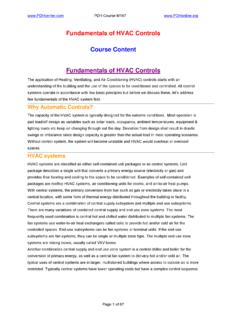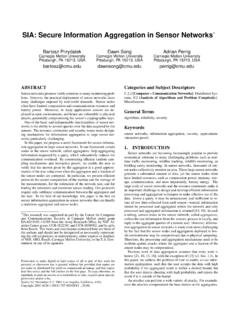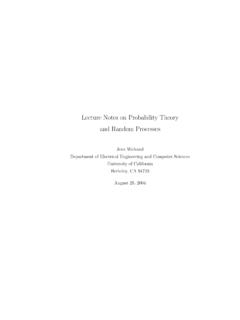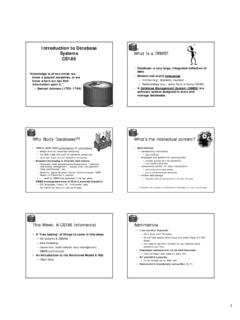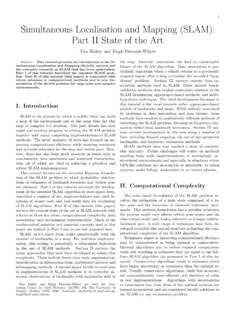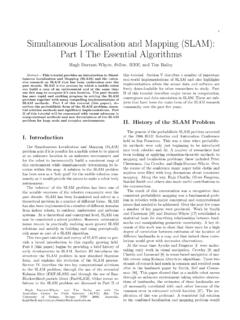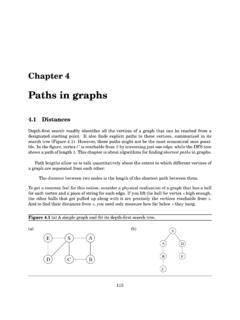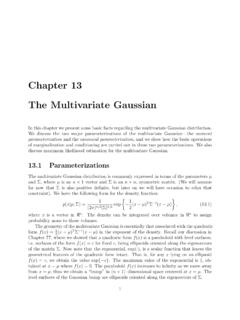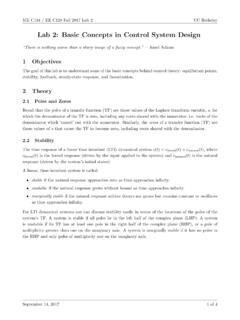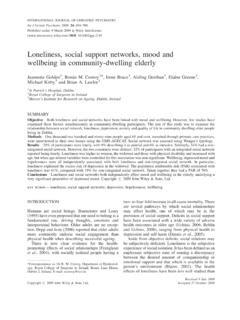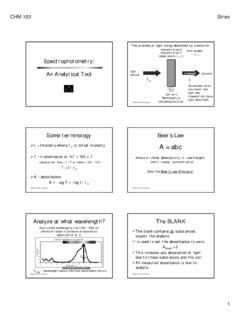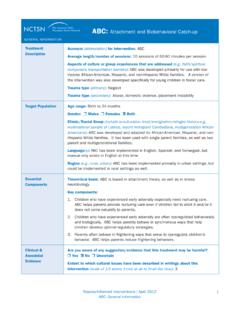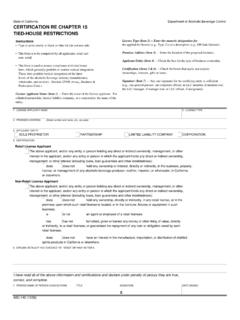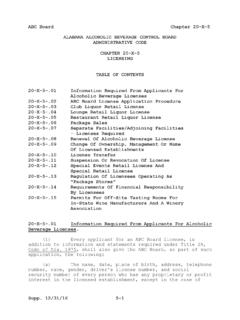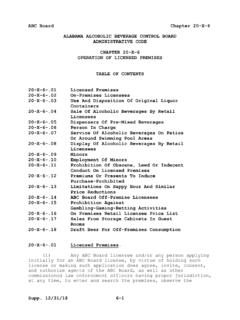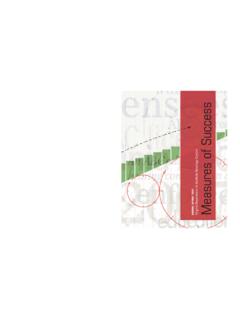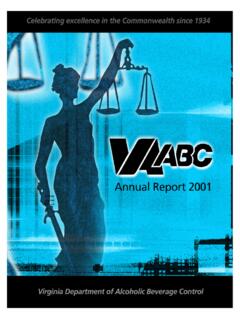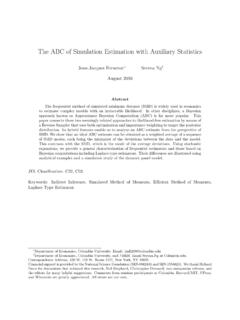Transcription of ABC: An Academic Industrial-Strength Verification Tool
1 ABC: An Academic Industrial-Strength Verification tool Robert Brayton Alan Mishchenko EECS Department, University of California, Berkeley, CA 94720, USA {brayton, Abstract. ABC is a public-domain system for logic synthesis and formal Verification of binary logic circuits appearing in synchronous hardware designs. ABC combines scalable logic transformations based on And-Inverter Graphs (AIGs), with a variety of innovative algorithms. A focus on the synergy of sequential synthesis and sequential Verification leads to improvements in both domains. This paper introduces ABC, motivates its development, and illustrates its use in formal Verification .}
2 Keywords: Model checking, equivalence checking, logic synthesis, simulation, integrated sequential Verification flow. 1 Introduction Progress in both Academic research and industrial products critically depends on the availability of cutting-edge open-source tools in the given domain of EDA. Such tools can be used for benchmarking, comparison, and education. They provide a shared platform for experiments and can help simplify the development of new algorithms. Equally important for progress is access to real industrial -sized benchmarks.
3 For many years, the common base for research in logic synthesis has been SIS, a synthesis system developed by our research group at UC Berkeley in 1987-1991. Both SIS [35] and its predecessor MIS [8], pioneered multi-level combinational logic synthesis and became trend-setting prototypes for a large number of synthesis tools developed by industry. In the domain of formal Verification , a similar public system has been VIS [9], started at UC Berkeley around 1995 and continued at the University of Colorado, Boulder, and University of Texas, Austin.
4 In particular, VIS features the latest algorithms for implicit state enumeration [15] with BDDs [11] using the CUDD package [36]. While SIS reached a plateau in its development in the middle 90 s, logic representation and manipulation methods continued to be improved. In the early 2000s, And-Inverter Graphs (AIGs) emerged as a new efficient representation for problems arising in formal Verification [22], largely due to the published work of A. Kuehlmann and his colleagues at IBM. In that same period, our research group worked on a multi-valued logic synthesis system, MVSIS [13].
5 Aiming to find better ways to manipulate multi-valued relations, we experimented with new logic representations, such as AIGs, and found that, in addition to their use in formal Verification , they can replace more-traditional representations in logic synthesis. As a result of our experiments with MVSIS, we developed a methodology for tackling problems, which are traditionally solved with SOPs [35] and BDDs [37], using a combination of random/guided simulation of AIGs and Boolean satisfiability (SAT) [25]. Based on AIGs as a new efficient representation for large logic cones, and SAT as a new way of solving Boolean problems, in the summer 2005, we switched from multi-valued methods in MVSIS to binary AIG-based synthesis methods.
6 The resulting CAD system, ABC, incorporates the best algorithmic features of MVSIS, while supplementing them with new findings. One such finding is a novel method for AIG-based logic synthesis that replaced the traditional SIS logic synthesis flow, which was based on iterating elimination, substitution, kerneling, don t-care-based simplification, as exemplified by SIS scripts, and Our work on AIGs was motivated by fast compression of Boolean networks in formal Verification [5]. We extended this method to work in synthesis, by making it delay-aware and replacing two-level structural matching of AIG subgraphs with functional matching of the subgraphs based on enumeration of 4-input cuts [26].
7 It turned out that the fast AIG-based optimizations could be made even more efficient by applying them to the network many times. Doing so with different parameter settings led to results in synthesis comparable or better than those of SIS, while requiring much less memory and runtime. Also this method is conceptually simpler than the SIS optimization flow, saving months of human-effort in code development and tuning. The savings in runtime/memory led to the increased scalability of ABC, compared to SIS. As a result, ABC can work on designs with millions of nodes, while SIS does not finish on these designs after many hours, and even if it finishes, the results are often inferior to those obtained by the fast iterative computations in ABC.
8 The next step in developing ABC was to add an equivalence checker for verifying the results of synthesis, both combinational and sequential [29]. Successful equivalence checking motivated experiments with model checking, because both types of Verification work on a miter circuit and have the common goal of reducing it to the constant 0. To test this out, we submitted an equivalence checker in ABC to the hardware model checking competition at CAV 2008, winning in two out of three categories. Working on both sequential synthesis and Verification has allowed us to leverage the latest results in both domains and observe their growing synergy.
9 For example, the ability to synthesize large problems and show impressive gains spurs development of equally scalable equivalence checking methods, while the ability to scalably verify sequential equivalence problems spurs the development, use, and acceptance of aggressive sequential synthesis. In ABC, similar concepts are used in both synthesis and Verification : AIGs, rewriting, SAT, sequential SAT sweeping, retiming, interpolation, etc. This paper provides an overview of ABC, lists some of the ways in which Verification ideas have enriched synthesis methods, shows how Verification is helped by constraining or augmenting sequential synthesis, and details how various algorithms have been put together to create a fairly powerful model checking engine that can rival some commercial offerings.
10 We give an example of the Verification flow applied to an industrial model checking problem. The rest of the paper is organized as follows. Section 2 introduces the basic terminology used in logic synthesis and Verification . Section 3 describes combinational and sequential AIGs and their advantages over traditional representations. Section 4 discusses the duality of synthesis and Verification . Section 5 gives a case study of an efficient AIG implementation, complete with experimental results. Section 6 describes both the synthesis and Verification flows in ABC and provides an example of the Verification flow applied to an industrial model checking problem.
